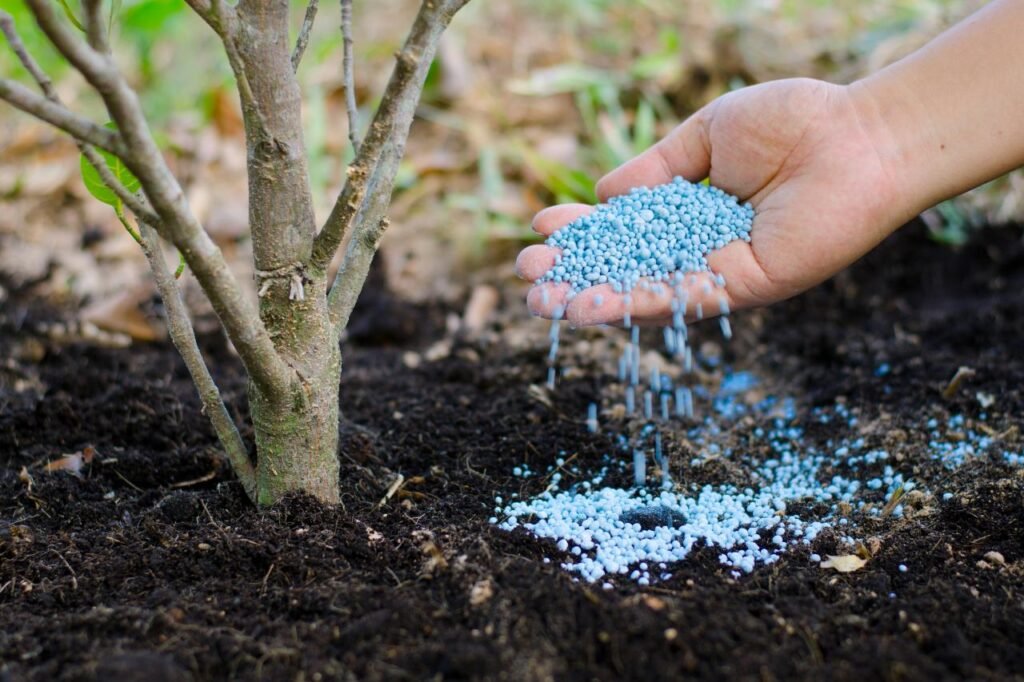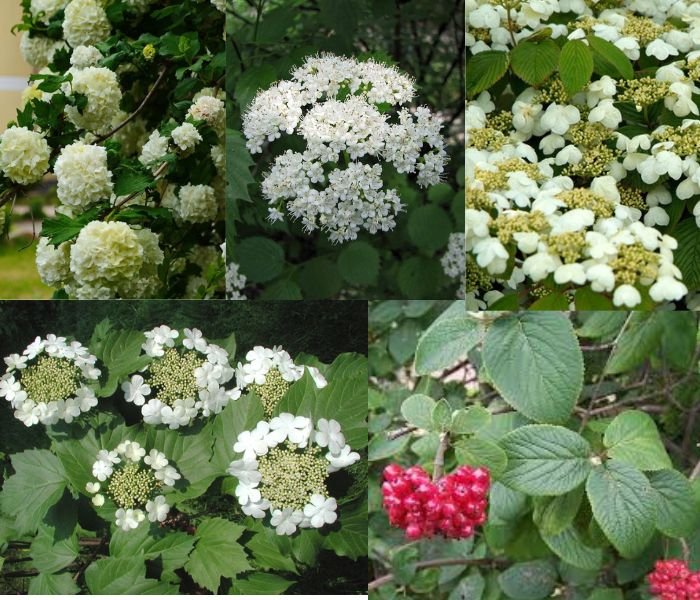Viburnum Shrubs are a low-maintenance choice for gardens with beautiful flowers, berries and fall color. Get tips on planting, pruning and best varieties to grow.
Viburnum Shrubs are some of the toughest, most versatile shrubs for home gardens. With their clusters of showy flowers, colorful berries and fall foliage, these plants provide year-round interest with very little effort required. No surprise they’re a landscape favorite!
From compact dwarf types to large screening shrubs, there’s a viburnum variety suited for just about any planting situation. They’ll even tolerate partial shade areas that stump many other plants.
Best of all, viburnums are generally care-free once established in the landscape. With their quick growth and easy maintenance requirements, these are excellent shrubs for both new and experienced gardeners.
Here’s a concise information chart about Viburnum shrubs:
| Attribute | Information |
|---|---|
| Botanical Name | Viburnum spp. |
| Plant Type | Deciduous or evergreen shrub |
| Zones | 3-9 (varies by species and cultivar) |
| Exposure | Full sun to partial shade |
| Bloom Time | Spring to summer |
| Height/Spread | Height: 2-20 feet Spread: 2-15 feet |
What are Viburnum Shrubs?

Viburnum is a genus of roughly 150-200 species of deciduous or semi-evergreen shrubs and small trees. Incredibly diverse, they’re native across the Northern Hemisphere from North America to Europe and Asia.
Most viburnums grow as upright, vase-shaped shrubs between 5-20 feet tall depending on the specific variety. A few become small multi-stemmed trees with time.
But what makes this group so desirable for landscaping is their four-season appeal:
- Spring flowers: Flat clusters of tiny white, pink or red blossoms resembling lace-cap hydrangeas
- Summer fruits: Vibrant berries turn red, blue or black when ripe to feed birds and wildlife
- Fall color: Foliage in shades of red, orange, yellow and purple before dropping
- Winter interest: Textured, peeling bark and dense branching structure
The aromatic flowers are also beloved by butterflies and other pollinators when blooming in spring. Quite a bit of ornamental value from a single shrub!
Benefits of Growing Viburnums

Not only do viburnums look fantastic throughout the seasons, but they’re also remarkably hardy, fast-growing, and unfussy shrubs in the landscape, with advantages like:
- Tolerant of cold winters down to zone 2 or 3
- Drought-resistant once established
- Pest and disease resistant
- Low-maintenance plants for beginners
- Wide range of sizes from 2-20 feet tall
- Flowering and fruiting even in partial shade
While semi-evergreen in warmer regions, viburnums go fully dormant over winter and rebound beautifully with new spring growth. Their arching, horizontal branching adds structural interest too.
As an added bonus, deer and rabbits tend to avoid nibbling the leaves and stems of most viburnum varieties due to their taste. A resilient, trouble-free shrub for home gardens!
Planting and Caring for Viburnum
Viburnums are easy shrubs to grow in most regions, provided the soil is relatively fertile and well-draining. Here are some planting and care tips:
Site Selection and Spacing
Locate viburnums in an area that gets 6+ hours of sun. While they prefer full sun for best flowering and fall foliage, most types will tolerate partial shade as well.
Space the plants about 4-6 feet apart for a natural hedge effect as they’re known to sucker and spread over time. For single accent shrubs, allow a 6-8 foot spacing.
Double check the expected mature height and spread and allow adequate room. For tight spaces, look for dwarf cultivars or choose a variety that can be pruned smaller.
Soil Conditions

While viburnums adapt to a variety of soil types, they perform best in loose, humus-rich, well-drained ground. Their shallow roots can struggle in heavy, compacted clay soils.
Plant in average garden soil amended with compost or aged manure to increase drainage and fertility. A slightly acidic to neutral pH of 6-7 is ideal.
Prior to planting, do a basic soil test and amend the soil as needed to reach the proper conditions.
Planting Steps

When planting viburnums, dig a hole twice as wide as the rootball but no deeper. This encourages roots to spread horizontally underground.
Set the plant in the hole at the same depth it was previously growing. Backfill with the existing native soil, firming it in gently with your hands. Stake any larger specimens for the first year until established.
Finally, water thoroughly to help compact the soil around the root zone. Apply a 2-4 inch deep mulch layer over the planting area to retain soil moisture.
Ongoing Maintenance

In the first year, be sure to provide supplemental water as needed to get your new viburnum established. Pull back mulch to directly soak the root zone weekly during hot, dry periods.
Once settled in, viburnums are remarkably drought-tolerant and carefree. Mature plants only need additional irrigation during an extended hot, dry period. Too much moisture leads to issues.
Fertilize established plants annually in early spring by broadcasting a balanced granular fertilizer around the base and watering it in well.
Pruning viburnums is optional but can help reduce density and maintain an attractive rounded shape. The best time is immediately after flowering in spring. Avoid heavy fall or winter pruning that would remove next year’s blooms.
Popular Viburnum Varieties

Here are some of the most widely grown and reliable viburnum shrubs to consider planting:
Viburnum carlesii – The fragrant Korean spice viburnum with pink-white flowers
Viburnum dentatum – Our native arrowwood viburnum with white blooms and blue berries
Viburnum lantana – Compact, densely branched wayfaring tree with wrinkled foliage
Viburnum lentago – The tall nannyberry viburnum with edible, sweet blue fruits for jams
Viburnum nudum – Smooth witherod viburnum has glossy leaves and pinkish flower buds
Viburnum opulus – Old-fashioned European cranberrybush with red berries and maple-like leaves
Viburnum plicatum – Beloved Japanese snowball bush with lace-cap blooms and purple fall color
Viburnum prunifolium – Blackhaw viburnum is a large, upright shrub with dark fruit clusters
Viburnum rhytidophyllum – Leatherleaf viburnum is a rugged, semi-evergreen variety
With dozens of species and cultivars to pick from, you’re sure to find a viburnum variety that suits your landscape needs! Their showy features, low-maintenance nature and hardiness can’t be beaten.
Try incorporating a few viburnums around your property and enjoy the changing seasonal interest they provide year after year with very little effort on your part.
Pingback: “Vibrant Viburnum Shrubs: A Beginner&rsqu...
Pingback: Spirea Shrubs: Flowering Stars for Year-Round Interest -
Pingback: Grow Your Own Wisteria from Seeds: A Step-by-Step Guide -
Pingback: Black Velvet Petunias: Unleash the Drama with This Beginner’s Guide to Growing -
Pingback: 18 Ornamental Grass Varieties to Beautify Your Landscape All Year Round
Pingback: Monkey Tail Cactus: A Fun, Easy-Care Succulent -
Pingback: How to grow & care for Captivating Dragon Tail Plant -
Pingback: Growing Fig Trees: A Comprehensive Guide for Beginners -
Pingback: Artichoke Gardening: Essential Tips for Globe and Jerusalem Varieties
Pingback: Beauty of Sambucus: Expert Tips for Thriving Elder Plants
Pingback: Winter Bird Feeding: A Guide to Nourishing Our Feathered Friends
Pingback: Welcoming Front Gardens: Creative Design Inspirations
Pingback: The Radiant Beauty of Yellow Mums: A Gardener’s Guide - Gardener's School
Pingback: Mangaves: How to Grow Magnificent Agave Hybrids Successfully
Pingback: Esperanza Plant: Tips for Care and Successful Growing